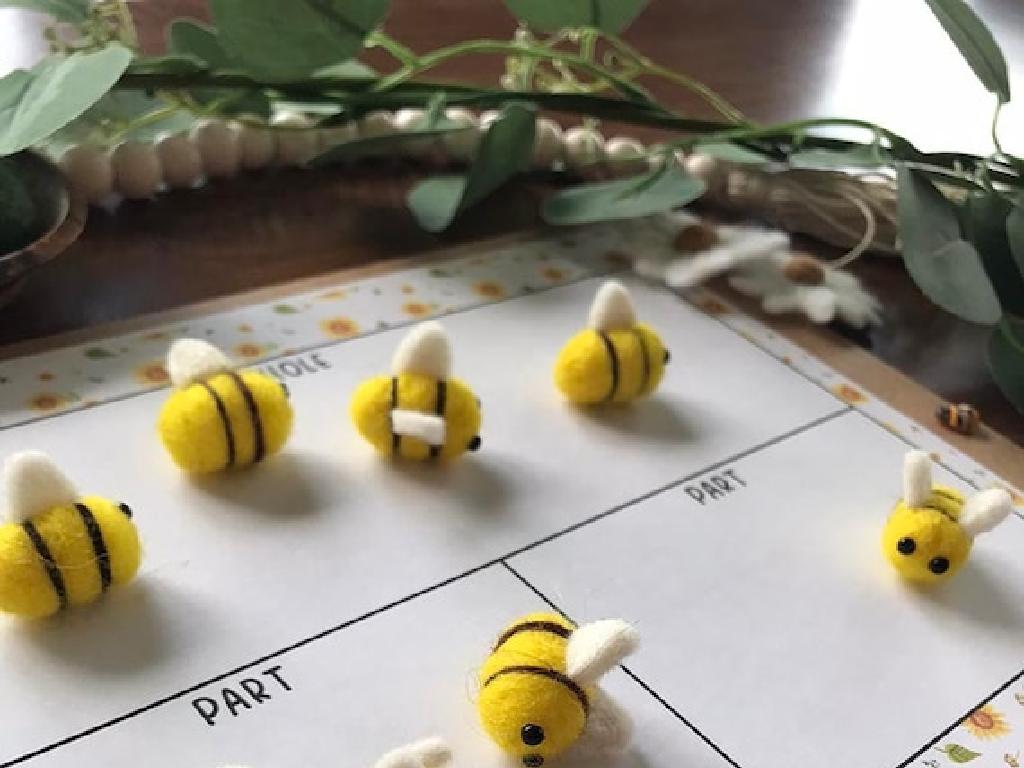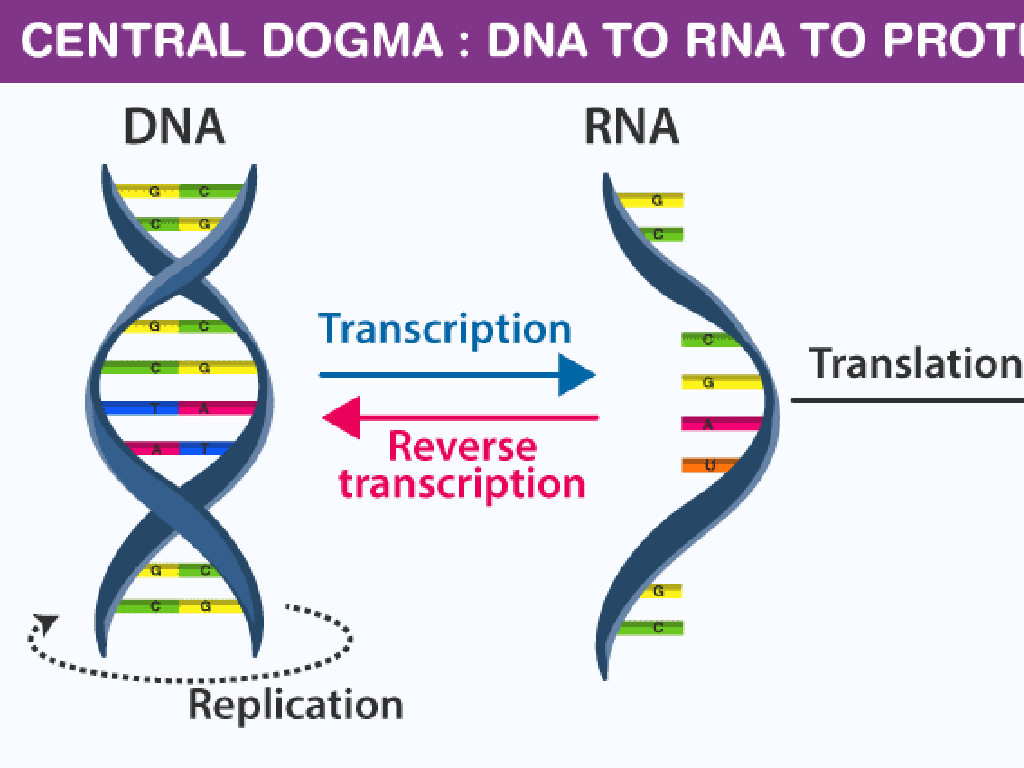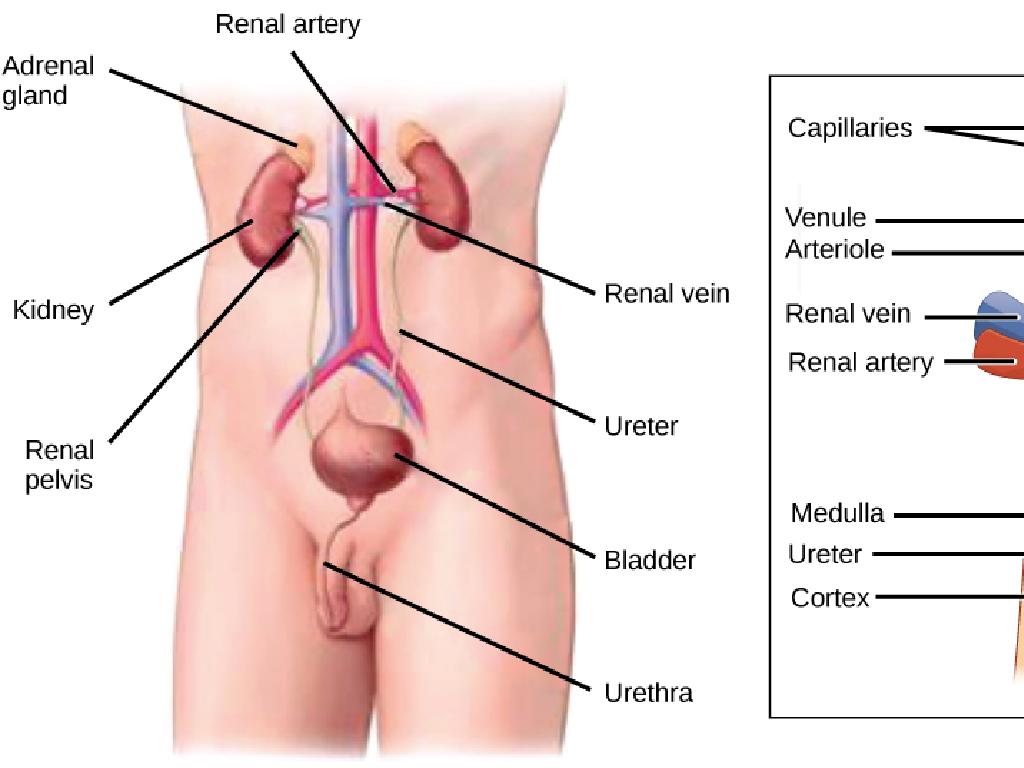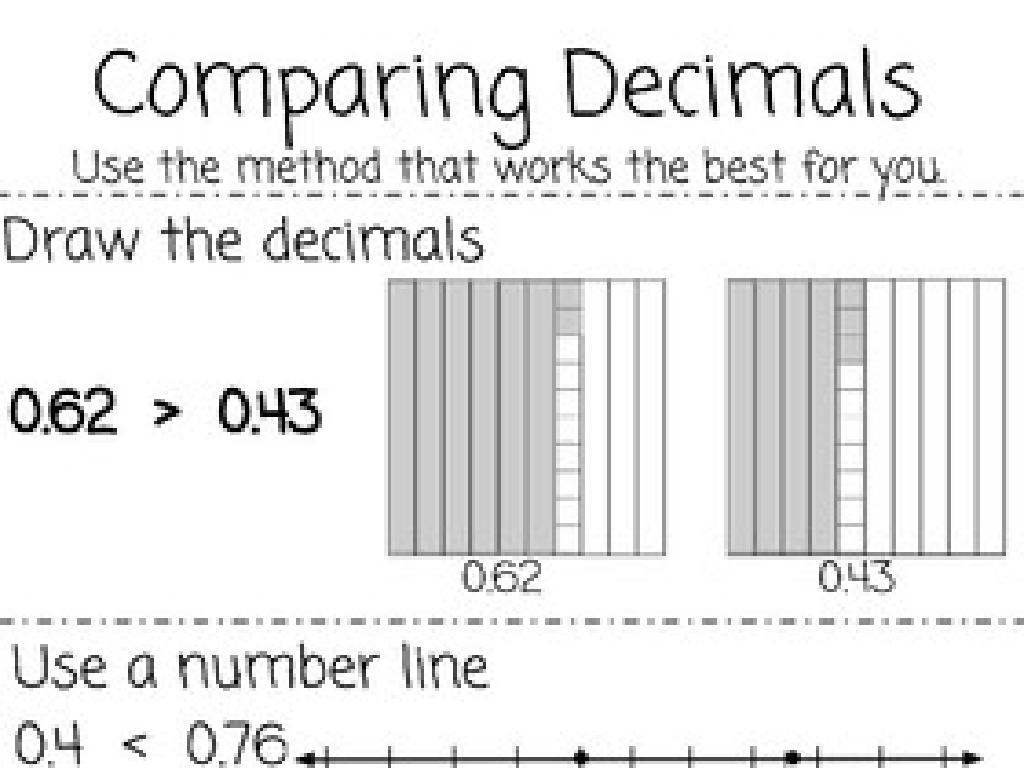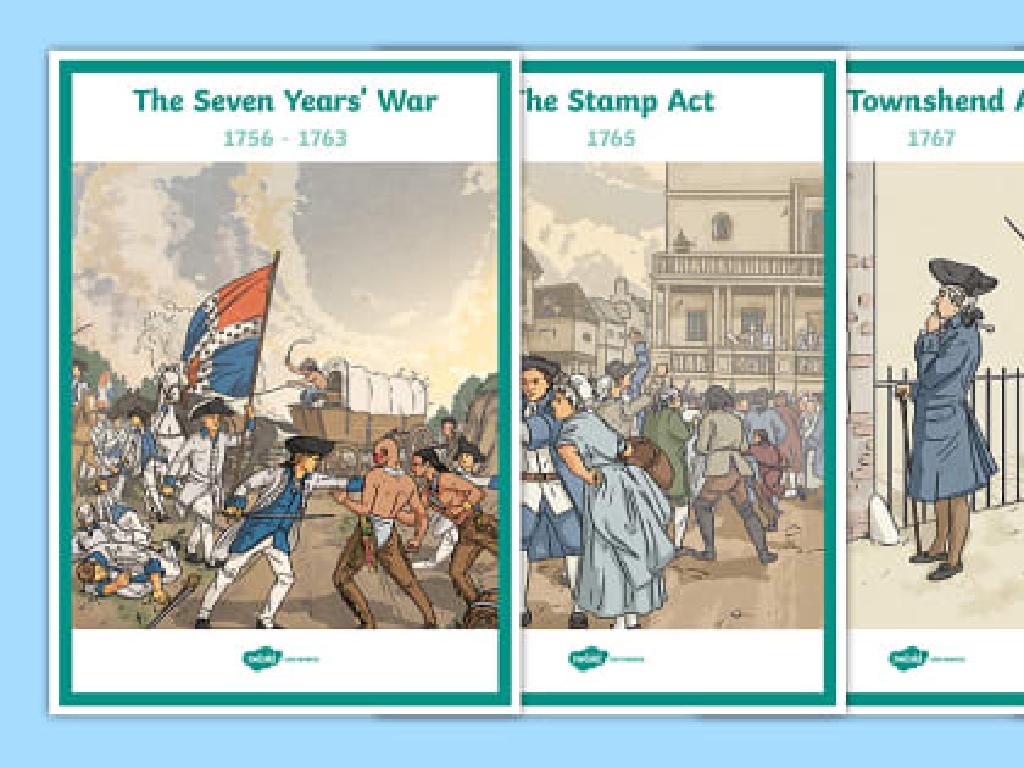Greater And Less - Compare Two Numbers Up To 5
Subject: Math
Grade: Kindergarten
Topic: Comparing Up To 5
Please LOG IN to download the presentation. Access is available to registered users only.
View More Content
Comparing Numbers: More or Less
– What does ‘more’ mean?
– ‘More’ means having a larger number of things
– What does ‘less’ mean?
– ‘Less’ means having a smaller number of things
– Comparing numbers up to 5
Using our fingers to see which is more: 3 or 5?
– Practice with fun examples
Let’s find which group has more apples and which has less!
|
This slide introduces the concept of comparison for Kindergarten students, focusing on the terms ‘greater’ and ‘less’ with numbers up to 5. Start by explaining the meaning of ‘more’ and ‘less’ in a way that’s relatable to the students, such as using items like toys or snacks. Use visual aids like fingers or counters to help them compare small groups of items. Encourage the children to practice by comparing different sets of objects, both in the classroom and in their environment. The goal is to make them comfortable with the idea of comparing quantities and understanding which is greater or less by counting. Prepare to engage the students with interactive activities where they can physically group and count items to determine more or less.
Understanding ‘Greater’ in Numbers
– ‘Greater’ means having more
– Count objects to compare
– Use toys or blocks to count
– 4 apples are more than 2
– Example: 4 toys is a bigger number than 2 toys
– Practice with different items
– Try comparing with snacks, pencils, or stickers
|
This slide introduces the concept of ‘greater’ to Kindergarten students by relating it to quantities they can visualize and count. Start by explaining that ‘greater’ means having a larger number of items. Use real-life objects like apples, toys, or classroom materials to demonstrate this concept. Show them two groups of items and count each group together to determine which has more. Use the example of 4 apples versus 2 apples to illustrate that 4 is greater than 2. Encourage the students to practice with various items to reinforce the concept. The goal is for students to understand and use the term ‘greater’ when comparing quantities up to 5.
Understanding ‘Less’
– ‘Less’ means not as many
– Count to see which is less
– Use fingers or blocks to count
– 1 toy is less than 3 toys
– Compare different sets of toys
– Practice with real objects
– Try counting snacks or crayons
|
This slide introduces the concept of ‘less’ to Kindergarten students. Begin by explaining that ‘less’ means there are not as many items compared to another set. Demonstrate this by counting objects such as toys, blocks, or even fingers. Use the example provided to show that 1 toy is fewer than 3 toys. Encourage students to practice with tangible items like snacks or crayons to solidify their understanding. During the next class, have a hands-on activity where students can compare different sets of items to determine which has less. This will help them grasp the concept of comparison and quantity in a fun and interactive way.
Comparing Numbers Up to 5
– Comparing with groups of items
– Look at different groups, like 3 apples vs. 2 oranges.
– Which group is bigger or smaller?
– Is 4 toys more than 3 candies?
– Counting with fingers to compare
– Understanding ‘more’ and ‘less’
– More means a bigger number, less means a smaller number.
|
This slide introduces the concept of comparing numbers to Kindergarten students by using tangible items and their own fingers. Start by showing them groups of objects and asking which group has more or less. Encourage them to use their fingers to count the items in each group, which helps them visualize the comparison. Reinforce the terms ‘more’ and ‘less’ with examples, and ensure they understand that ‘more’ refers to a larger quantity and ‘less’ to a smaller one. Use everyday objects to make the learning process relatable and engaging. For the activity, have several sets of items ready for students to compare and discuss in pairs or small groups.
Let’s Practice Together: Greater and Less
– Count two groups of objects
– Decide which is greater
– Which group has more objects?
– Decide which is less
– Which group has fewer objects?
– Greater means more, less means fewer
|
This slide is for an interactive class activity where the teacher will show the students two groups of objects. The teacher will guide the students to count the objects in each group together. After counting, the class will discuss which group has a greater number of objects and which has less. The teacher should emphasize the concept that ‘greater’ means a larger quantity and ‘less’ means a smaller quantity. For the activity, the teacher can prepare different sets of objects or use illustrations if physical objects are not available. Possible activities include using blocks, stickers, or drawn images. The teacher should ensure that the numbers are within the range of 1 to 5 to align with the lesson’s objective.
Game Time: More or Less?
– Spot which group has more
– Look at pictures and decide
– Does the group of apples or oranges have more?
– Shout out your answer loud
– Get ready for fun learning!
|
This interactive game is designed to help Kindergarten students understand the concept of comparing quantities up to 5. Display pictures with different groups of items, such as 3 apples versus 4 oranges, and ask the students to identify which group has more. Encourage them to shout out their answers to create an engaging and fun atmosphere. This activity will help them visually compare two sets of items and reinforce their understanding of ‘more’ and ‘less’. Be prepared with a variety of images and ensure that each child gets a turn to participate. Possible variations of the activity could include using physical objects, interactive digital tools, or drawing items on the board.
Class Activity: Number Match-Up
– Show what you’ve learned
– Match numbers to object groups
– Find the group with the same number of items as the number shown
– Pair up for match-making
– Work with a classmate to help each other
– Have fun finding matches
|
This activity is designed to reinforce the concept of number recognition and counting for Kindergarten students. Teachers should prepare sets of cards with numbers on one set and corresponding groups of objects (1 to 5) on another. Students will work in pairs to match the number cards to the correct group of objects, promoting collaboration and discussion about counting and comparison. Possible variations of the activity could include using different objects for counting, having students draw the groups to match numbers, or even a scavenger hunt where students find objects in the classroom to match the numbers. The goal is to create a fun, interactive experience that solidifies their understanding of the numbers 1 through 5.
Celebrating Our Number Comparisons!
– Fantastic work on number comparisons!
– ‘Greater’ means more than
– For example, 4 is greater than 3
– ‘Less’ means fewer than
– For example, 2 is less than 5
– You are all math superstars!
|
This slide is a conclusion to reinforce the concepts of ‘greater’ and ‘less’ when comparing numbers up to 5. It serves as positive reinforcement for the students’ hard work during the lesson. Remind the students that ‘greater’ means having a larger number of items or a higher value, and ‘less’ means having a smaller number of items or a lower value. Use simple, clear examples to illustrate the point, such as comparing small groups of objects or using fingers. Celebrate their understanding and progress in learning how to compare numbers, which is a foundational math skill. Encourage them to continue practicing at home with their toys or snacks, comparing small quantities to reinforce the concept.

